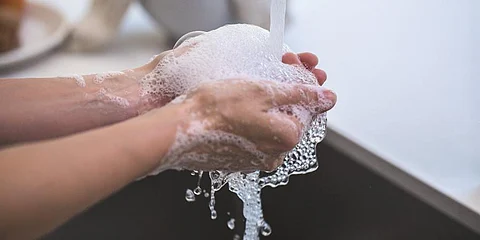

NEW DELHI: To keep the risk of catching coronavirus infections at bay, washing hands with soap water and using sanitizer are two of the most important steps, as recommended by the World Health Organisation (WHO). But the latest survey reveals India has a dismal record when it comes to maintaining hygiene.
The National Sample Survey (NSS) 76th round report, 2019, revealed that only 35.8 percent of households in the country practice hand-washing with soap or detergent before a meal, while 60 percent households wash hands only with water.
More surprisingly, about 24 percent population don’t wash their hands with soap or detergent even after defecation. The NSS survey on ‘Hygiene and Sanitation’ covering both urban and rural parts have also disclosed that the people in major states, including Bihar, Uttar Pradesh, Rajasthan, Tamil Nadu, and West Bengal, use soap less than the national average of 35 percent.
The data shows while a few use mud and ash to wash their hands before the meal, many do it only with water. States like Jharkhand (60 percent), Bihar (69 percent) and UP have the highest number of people who do not use soap after defecation.
In rural areas, 70 percent of people wash hands with water without soap or detergent before a meal and in urban areas, 42 percent of people follow this practice. The report also shows some numbers where water was not available. There are 4.5 percent of the households in the rural areas and about 2.1 percent of the households in the urban areas reported that water was not available in or around the toilets used.
Amid the rising case s of COVID-19 pandemic, medical practitioners have advised using soap frequently to wash hands. Many cities also reported a sharp rise in the sale of hand wash and sanitizers.The survey was spread over 8,992 first-stage units (5,378 in rural areas and 3,614 in urban areas) covering 1,06,838 households (63,736 in rural areas and 43,102 in urban areas).